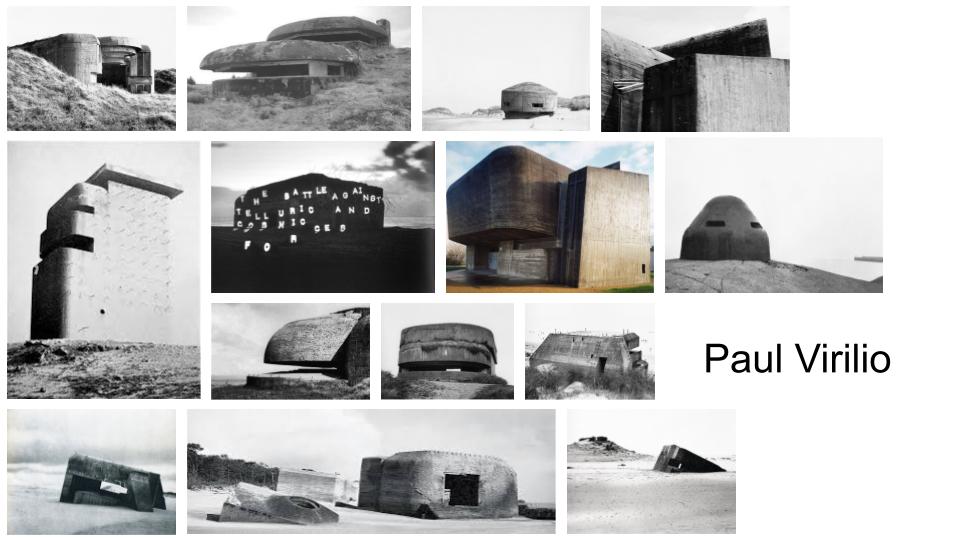Paul Virilio

Biography
Paul Virilio was born in Paris in 1932. His father was an Italian communist and his mother was Breton. He grew up in Brittany, France. He trained at the Ecole des metiers d’art and specialized in stain-glassed artwork and even worked beside Mattisse in churches. In 1950, he converted to Christianity instead of catholicism.
During the Algerian war of independence, he was conscripted into the army. He then went on to attend lectures in phenomenology at the Sorbonne. 1958, he went on the conduct a phenomenological inquiry into military space and the organization of the territory, especially the Atlantic Wall which can be seen in his images. 1963 he began collaborating with the architect Claude Parent. He participated in the May 1968 uprising in Paris and was nominated by students to be a professor at the Ecole Speciale d’Architecture. From this, in 1973 he became director of studies and the director of a magazine called L’Espace Critique
In 19575, he helped organize a Bunker Archeologie exhibition in Paris. Because of this he became widely published and anthologized.
How did his life Influence his work?
He said ‘war was his university,’ he lived in France during the Second World war. The war developed into an interest for him throughout his life.
Analysis

Technical
Lighting: The lighting in the image appears to be natural from the sun which appears to be behind the subject of the image because the side of the subject we can see is in shadow but bordered by light.
Visual
There is no color in this image, it’s black and white. It has a dark tone because the subject and the landscape are cast in shadow due to the positioning of the sun. The image still has a lot of texture due to the tonal range. You can see the grain and uneven texture of the sandy landscape and the waves in the sea. The image is composed so the subject is in the center and is the focal center.
Contextual
The image is called the Atlantic Wall (the battle against telluric and cosmic forces) and was taken 1994-1995. It’s part of Virilio’s book Bunker Archaeology. It’s an image of a German occupation structure on the Atlantic wall in France. that has been abandoned.
Conceptual
Virilio was an urbanist and these images were meant to emphasize how ghostly and derelict these abandoned buildings are but also to remind how destructive these buildings were. These occupation buildings were part of Virilio’s early life in France and now abandoned they appeared even more like the places of destruction and nightmare for many. Virilio was looking into Albert Speer, Hitler’s head architect when he took the series of images this image is a part of.
